2019 and the first few months of 2020 was a time of many changes on Instagram. One of them, even though it’s only being tested, is already very controversial. What we have in mind here is hiding likes under Instagram posts.
Initially, the first tests were done in the beginning of 2019, and in November 2019 they were extended to more countries and more Instagram users. Still, there is no official statement whether or not this change will be launched globally to all Instagram users.
Even if it happens, will it be a revolution in marketing? Is it going to be a significant change for users, brands, influencers, but also for providers of online analytical apps?
We’ll try to answer these questions today.
The whys behind hiding likes on Instagram
Let’s start from the very beginning: we should all be conscious of why Instagram decided to take such a revolutionary step. Officially, there were several reasons behind this decision:
- From the users’ perspective: Instagram wants to guarantee users more freedom when it comes to engaging with content on the platform, less social pressure, less comparing ourselves to other people,
- From creators’ or influencers’ perspective: Instagram wants influencers to be less focused on number of likes and stats in general, but rather focused on creating valuable content and building relationships with followers instead,
- From Instagram’s perspective: Instagram is still on a fight against buying likes, and wants to create a space that is more safe for users.
Adam Mosseri, CEO of Instagram, believes that hiding likes on Instagram will have the effect of reducing pressure which users tend to feel while using Instagram, especially when it comes to younger users. The main thrust of this change is to give all users more freedom when it comes to creating and publishing content. According to the Instagram CEO, the platform is supposed to be a place where people can build relationships, have a dialogue, broaden their horizons and deepen their interests.
WATCH: Instagram CEO Adam Mosseri announces that the platform will start hiding likes for US audiences starting next week. It’s the latest step in Instagram’s quest to become the safest place on the internet. https://t.co/BGkMG57rdk #WIRED25 pic.twitter.com/WNTyAPVhaD
— WIRED (@WIRED) November 9, 2019
Of course, no one believes that the potential change was made only for users’ well-being. After all, Instagram is a business and as any business, it was started to bring income. But along with many social changes, and issues which accompany them, social media platforms need to adjust to these changes and users’ expectations. Instagram is no exception.
We can hear more sceptical opinions, too. If we don’t know what is it all about, it has to be about money. According to some experts, hiding likes on Instagram has only one intent: repairing Instagram’s budget by increasing the income from ads (like it was with Facebook a few years ago). If it happens to be true, organic reach will decrease, and brands and influencers will be forced to extend their advertising budgets to reach a broader audience.
How to check the number of likes under your own posts?
What does hiding likes mean in practice?
As users, we will no longer see how many likes each post published by any Instagram user had – no matter if we follow him or not.
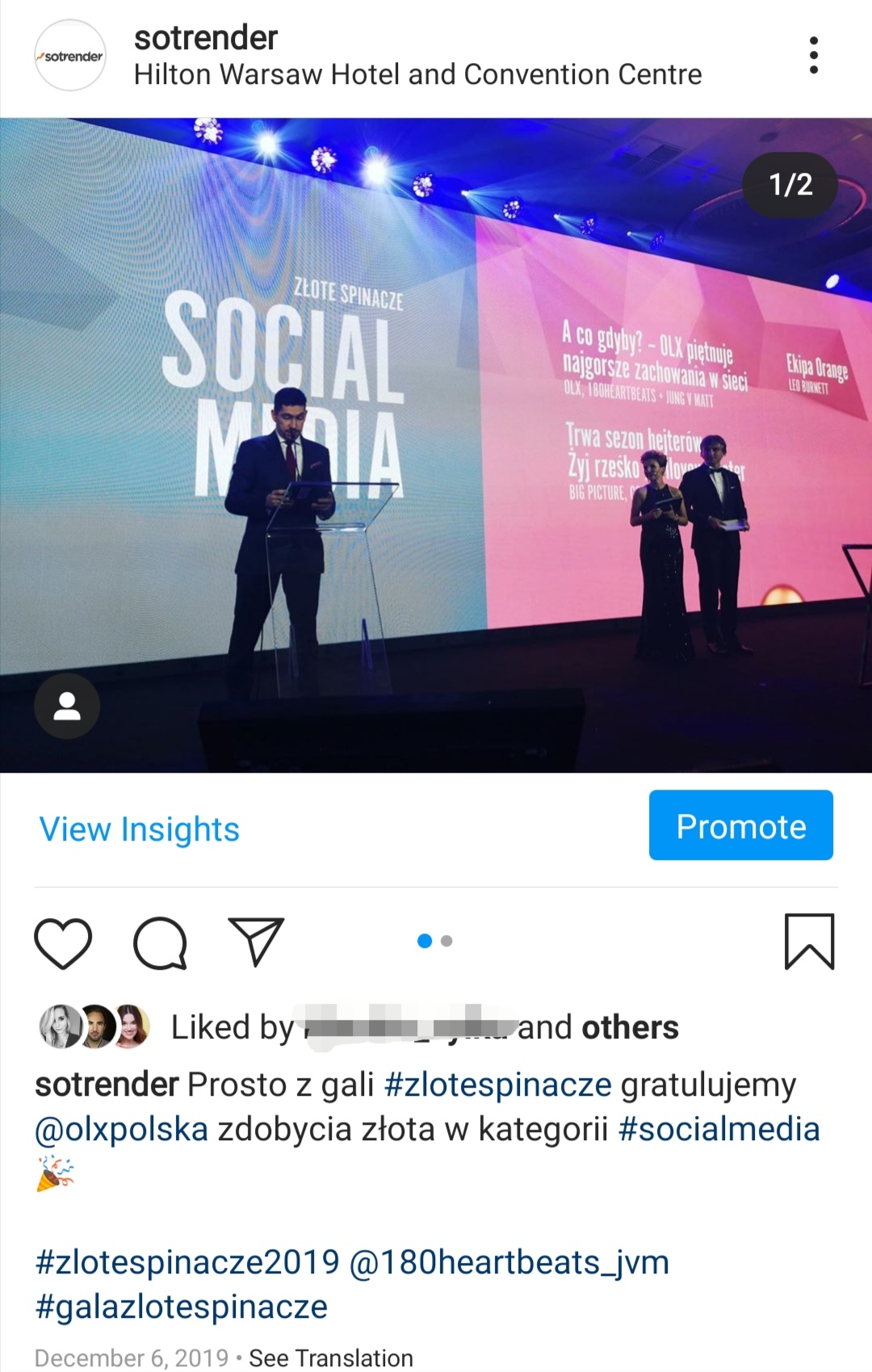
This is how a post looks like without the number of likes
What you can do, however, is see the list of users, who have liked a post, as well as find any user on this list.
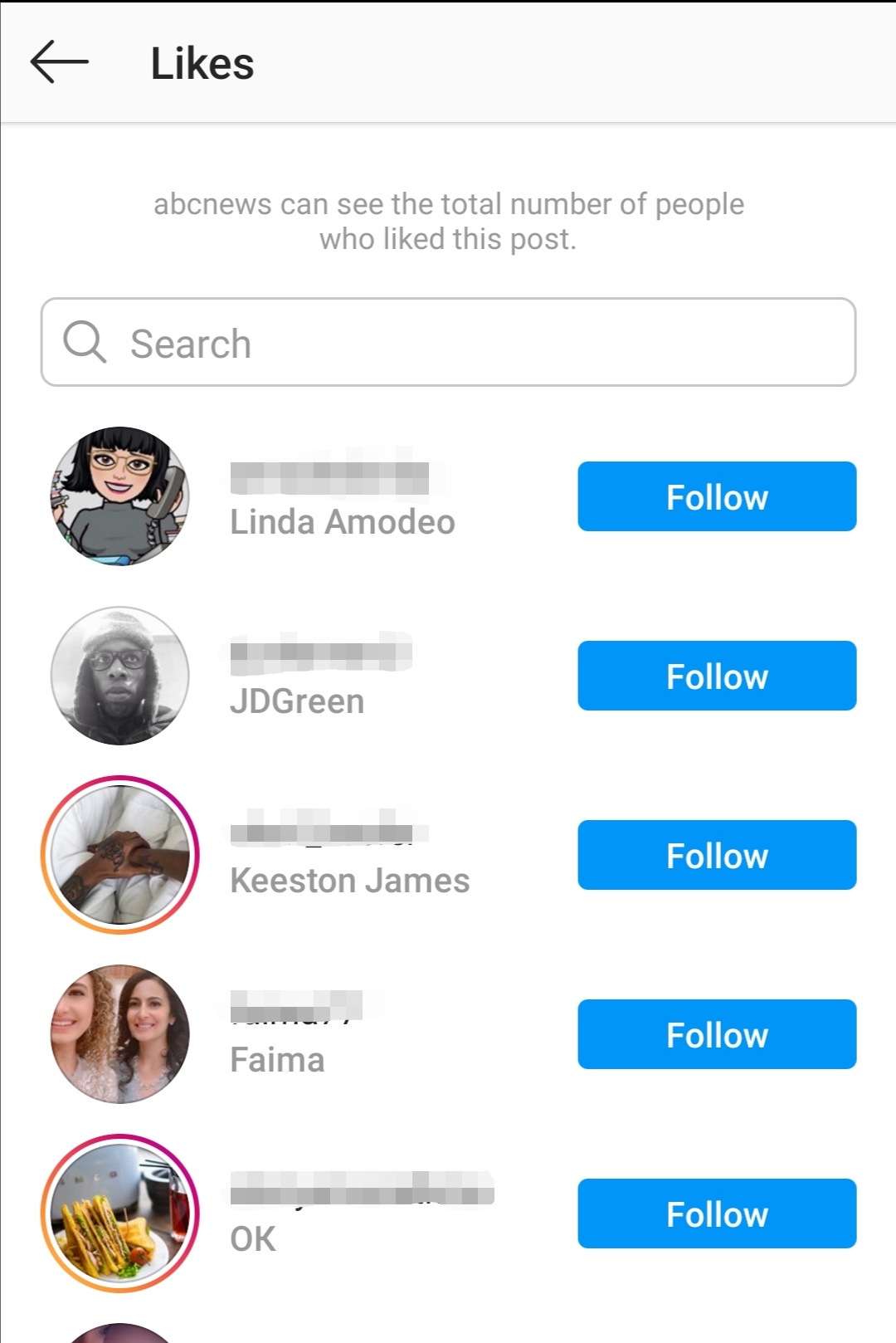
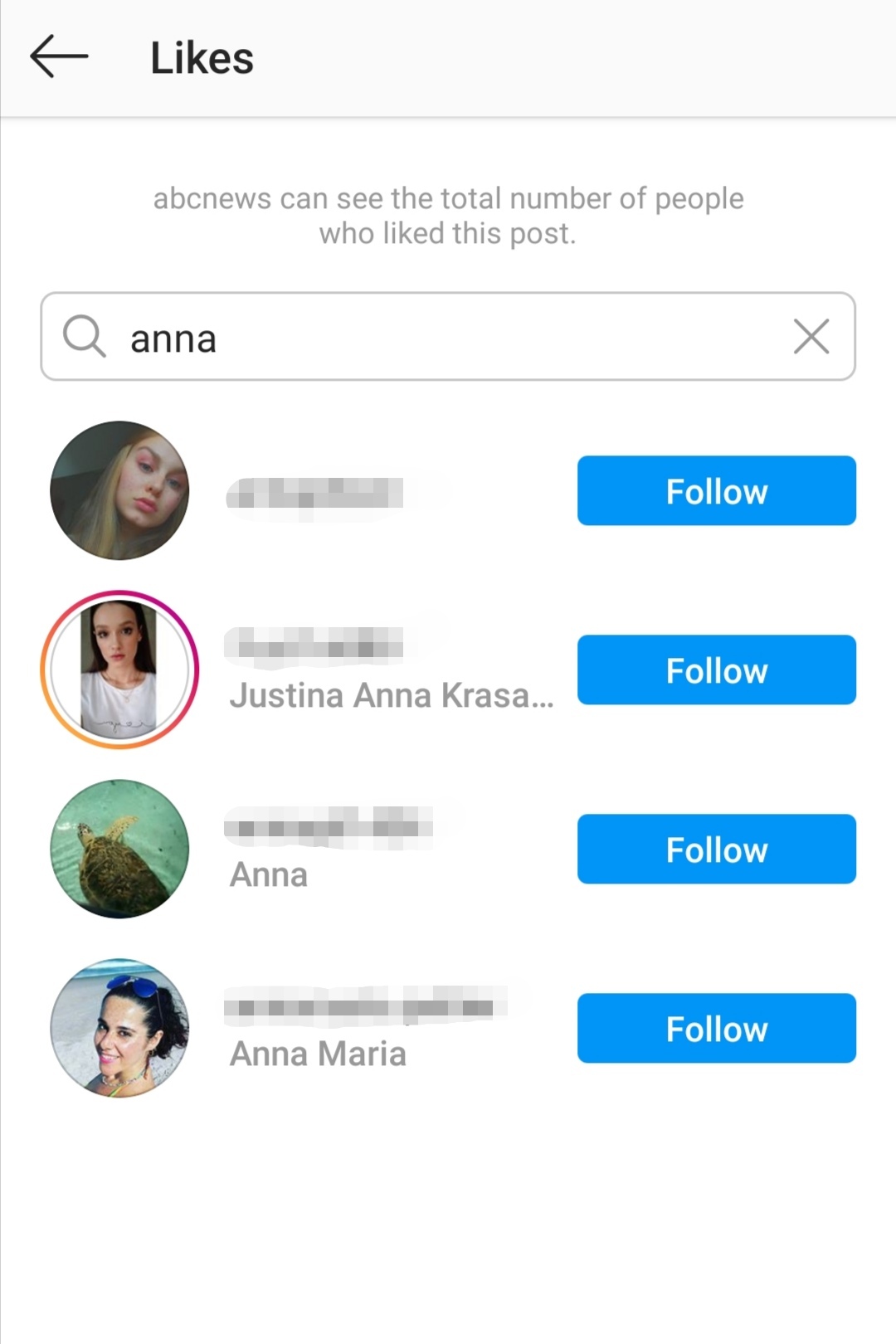
It is similar with your own content. The only difference is that you will also see the total number of likes above the list of users who have liked your post.

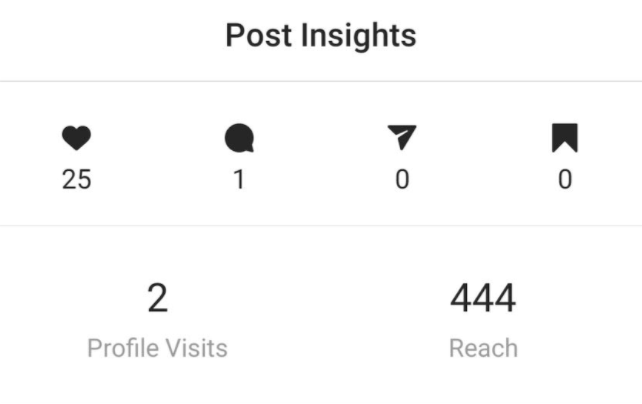
Also after clicking the Post Insights button below each post (as presented in the first example), you will see the total number of likes it got. It’s obviously applicable only to your own posts.
Even though under others posts you won’t see the number of likes, to some point it’s possible to know how popular each post was… but only if it gained thousands or millions of likes. 


Right now tests are being run in selected countries around the world, among many in the USA, Australia, Italy, Ireland and Japan.
As you may wonder, there is no possibility to request your account to be included in tests. Instagram randomly “selects” accounts that are included in them.
It’s also not possible to go back and see likes again if your account was affected by this change.
Instagram fights for engagement
Instagram obviously wants to keep all its users within the app. The only way to do this is by engaging them more with the content on the platform and by increasing interactions between users.
It’s worth remembering that Instagram has recently launched 2 new features: creator profiles and Threads app, which are to help to achieve this goal. It’s also constantly developing Stories and its accompanying features.
While Threads app was made to keep us closer with friends and family, the creator profile, as the name is suggesting, was launched for business purposes. You will find there more insights about your performance, as well as more features in the inbox.
The change of hiding the number of likes was introduced also to encourage users to add new content more often. A good example from Instagram itself was Stories, where influencers, and users, are more willing to share, and watch, others’ content.
What should be the reason for using Instagram is not getting likes, but the need to share something with others.
Even earlier steps taken by Instagram could suggest that in a longer time perspective there will be less and less data available publicly on profiles.
Even Instagram Stories is such an example. Launching it was a great success (Stories are booming and it’s one of the most often used features among users right now), even though no public data is available for them.
Also the archive option was launched to give users more freedom when it comes to managing the content they publish. After all there are two reasons for archiving posts: either they are no longer valid (e.g. the post was about some promotion) or they didn’t get an expected number of likes. Even though we no longer want to have them publicly available on our profile, the fact that we’ve published them some time ago means that they have some value to us.
Challenges for marketing standing behind hidden likes
Instagram is more and more often treated like a portfolio. Especially when it comes to our profiles, we no longer publish random posts there, especially when it comes to brands’ or influencers’ profiles. Influencers and creators publish only high quality, perfectly polished posts. Stories offer a space where you can be spontaneous.
Lack of information about the number of likes should make creators and influencers feel more free to publish whatever they want: what they feel is valuable, interesting and worth sharing, maybe also more artistic, creative and niche, no matter if it gets an expected number of likes.
It’s also a chance for users to broaden their horizons and interest, to engage more with other users and content, which they find interesting, without being judged.
It’s worth mentioning here that it wasn’t so long ago that Instagram removed our ability to see what users that we follow do on Instagram (which posts they liked or commented on).
Consequences of hiding likes
If Instagram decides to hide information about the number of likes globally, this will most probably have the biggest impact on influencer marketing.
Research conducted by HypeAuditor clearly shows that hiding likes may have a significant impact on the number of likes our posts will get. During the first months of tests, on many markets the number of likes decreased by 3 – 15% (on profiles with 5k-20k followers).
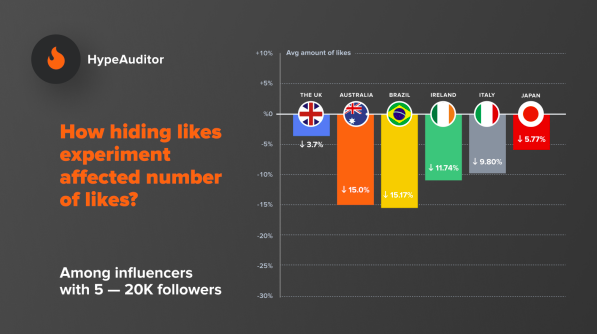
Research conducted by HypeAuditor
The results were more diverse on bigger profiles:
- Profiles with 20k – 100k followers: decrease by 1.6% – 30%,
- Profiles with more than 100k followers: from increase by 6% to decrease by 30% in the number of likes under posts.
The analysis was done, however, only in a few countries: the biggest change in number of likes was observed in Brazil (decrease by 15-30%), while the smallest change in Japan.
Of course, it’s hard to predict how users in other countries will behave: whether the change will be drastic or not. We should also remember that other factors might have affected the results of the research as well.
What is more, for quite a long time users are complaining about significantly smaller engagement on their profiles. By hiding likes, Instagram may want to hide this constantly decreasing engagement, to prevent users from being discouraged from creating and publishing new content and leaving Instagram as a result.
The conclusion for us is clear: the change in the visibility of Instagram likes won’t be revolutionary.
Most probably, in the case of big and popular profiles, it will have a marginal impact on total engagement. Owners of newly created profiles may be in a much more difficult situation. They’ve just started fighting for users’ attention and engagement.
What will change from the influencers perspective?
We already know that influencers may be affected by this change the most. What could it mean in practice? While cooperating with more conscious brands, influencers may be asked to report effects of their campaigns in a much more detailed way.
Nevertheless, even today influencers are already used to providing stats about their posts performance and total engagement, both before they start cooperating and once their cooperation comes to an end.
How the change in likes visibility will affect SaaS tools?
From our perspective, it seems that the change in like visibility on Instagram is a great chance for tools around influencer marketing, like HypeAuditor or InfluTool, to develop. Brands, especially at the initial step of researching and choosing influencers, will be even more willing to use these. Of course, until the Instagram API will change as well and some data will be completely removed.
Also, tools like Sotrender will gain in importance. Because the number of likes under posts won’t be publicly available under influencers’ posts, it will be even more important to properly report results of each campaign to the brand. The information about the number of likes, even if eventually happen to be not available publicly, will definitely still be insight data.
What will change from the perspective of social media agencies?
How does the change of like visibility look like from the perspective of an agency? We asked Kasia Zielińska from Performance Media agency, a leading agency in Poland.
After these few weeks during which likes were no longer that significant, I have to say that nothing really bad happened.
What is more, I can even say I’m happy with that change. Information about the number of likes is still available for the owner of each account. The algorithm still shows the content which gathers the highest engagement. Likes are maybe not presented as numbers, but we can still see, for example, who liked each post. It’s like a change in the grading system in schools: instead of grades from 1 to 6, we have descriptive evaluation.
What are my expectations towards this change? First of all, I hope for more transparency in data when it comes to measuring communication effectiveness. I also hope for more consciousness when it comes to metrics that should be taken into consideration while measuring performance of social media channels. For example, during collaborations with influencers we’ll be expecting more data than usual, one screen with just the number of likes will no longer be enough. Data about reach, number of comments or profile visits is what will matter. It’s also a very good excuse to develop metrics, which will measure communication effectiveness and authenticity. Maybe Instagram will also take more care about developing its own analytical platforms. We’ll see what this change will actually bring us

Kasia Zielińska
Digital Project Leader
Performance Media Poland
Instagram metrics – what should we analyze and how
Hiding likes on Instagram will force, at least some, users to change their habits when it comes to analyzing their Instagram performance.
After all, likes were not a good measurement, because of how easy it is to manipulate them, especially when it comes to common practice of buying likes. Also, the number of followers becomes less important (this tendency is also visible on the new profile layout).
Which engagement metrics should we monitor and analyze then?
Among others:
- Number of replies to Instagram Stories,
- Number of comments under posts,
- Number of link clicks on profile,
- Number of content views,
- Number of saved posts (this directly represents how interesting and valuable the posts are for your audience),
- Number of Swipe up’s.
All of these metrics can be analyzed with the use of Sotrender.
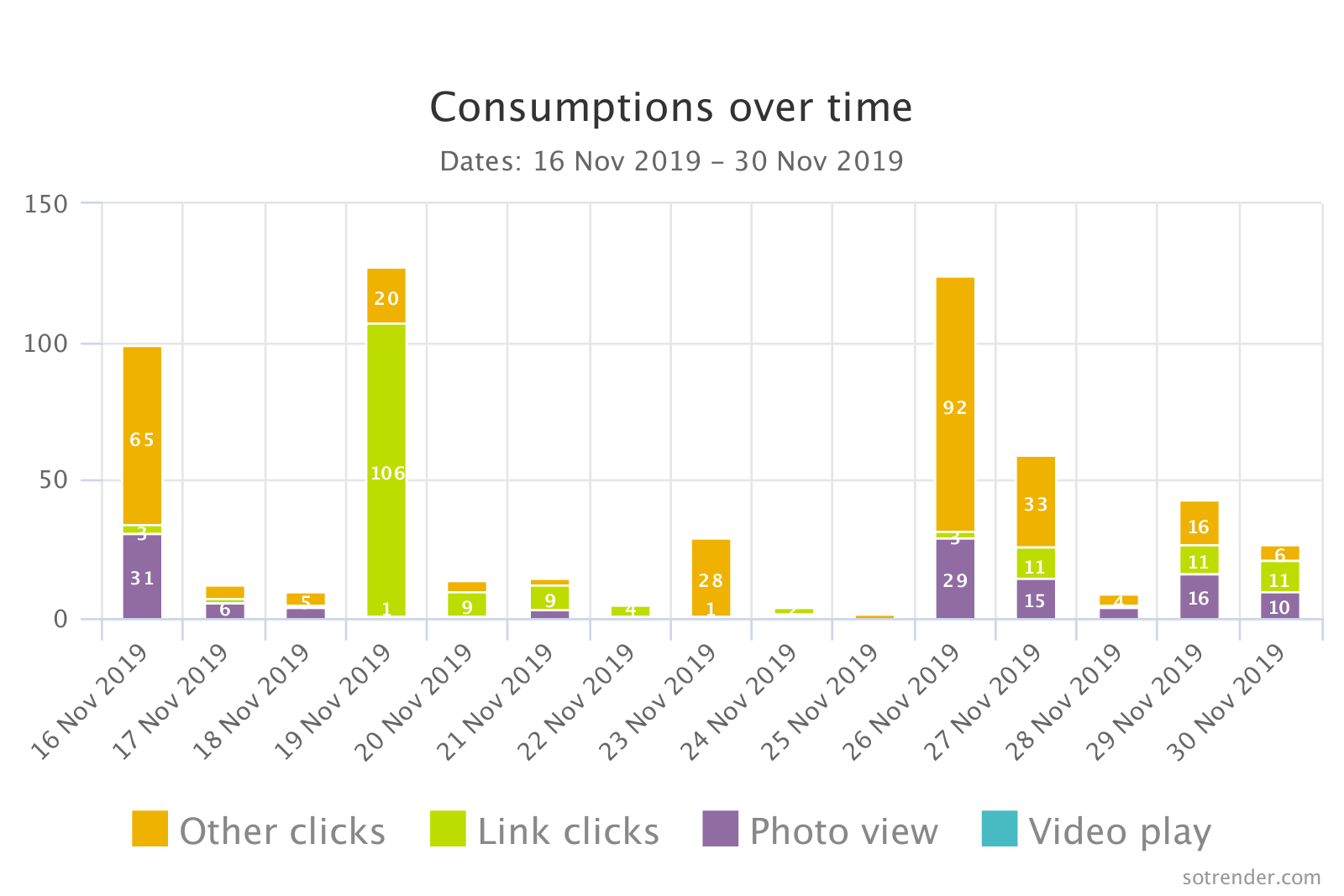
Consumptions over time, Sotrender app
Start analyzing your Instagram performance
Remember that these metrics are also significant from the perspective of the Instagram algorithm. We hope you are aware that it’s extremely important, for example, if you are receiving DMs from other users and if you’re replying to them. Such elements matter a lot when it comes to your overall content performance.
Hidden likes and using Sotrender
There is no need to worry when it comes to using Sotrender and analyzing Instagram data, including the number of likes.
We’ll just remind you that when it comes to Instagram you can add only your own profiles to Sotrender. It means that you can still monitor the data about the number of likes and report in an unchanged form. Even the change in Instagram API, which may happen anytime, shouldn’t change that, because we cannot imagine that the number of likes will be removed from Instagram completely.
In the future, once Instagram decides to hide the number of likes globally, only some reports from our offer may be impacted (it’s applicable only to those reports in which we analyze likes to measure total engagement).
As for now, however, all of the reports from our offer remain unchanged. One of them is the Instagram comparative report. As we’ve already mentioned, the information about the number of likes is still available in the Instagram API, we can still prepare this report for you. You will find there e.g. metrics informing about engagement on selected profiles.
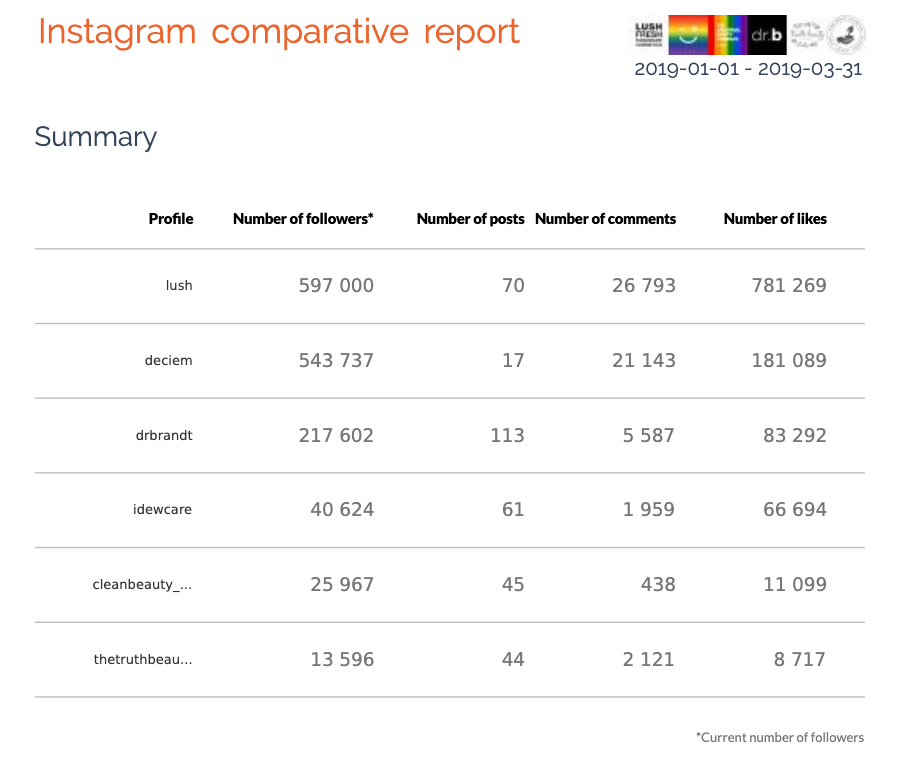
Comparative report for Instagram – overview
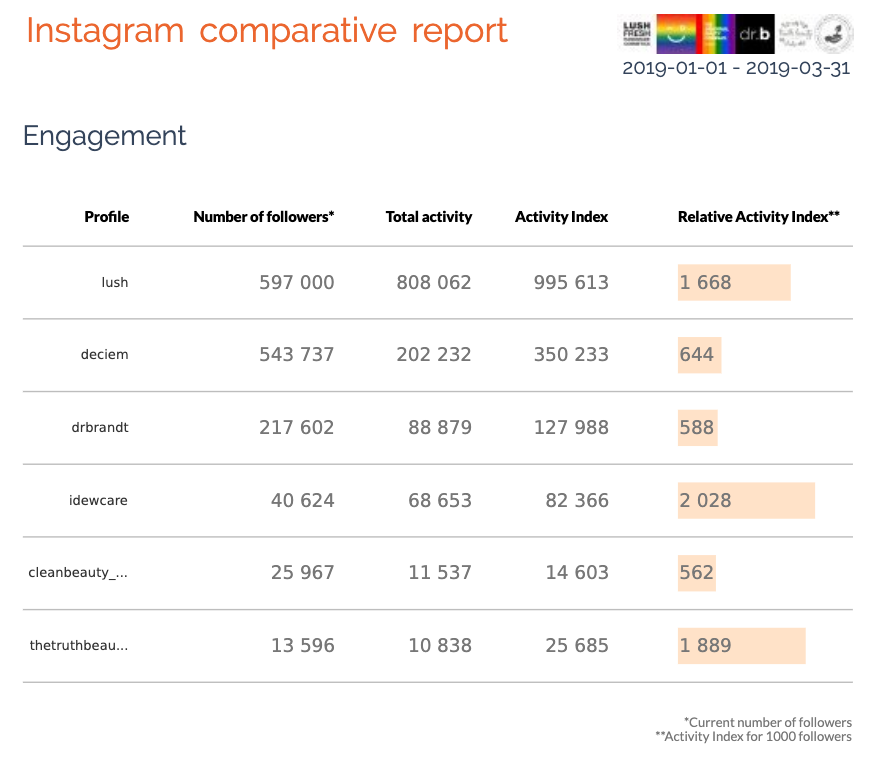
Instagram comparative report – Engagement
Hidden likes won’t mean the end of Instagram
Hiding likes on Instagram, even if happen to be implemented globally, won’t be the end of the platform. Likes are no longer, and never will, a good measure of success on Instagram. Giving a like takes much less effort than watching a few Stories and reacting to them.
Likes are no longer a hot metric and no matter if data about them are available publicly or not, marketers should leave them behind for good and focus on completely different metrics.




